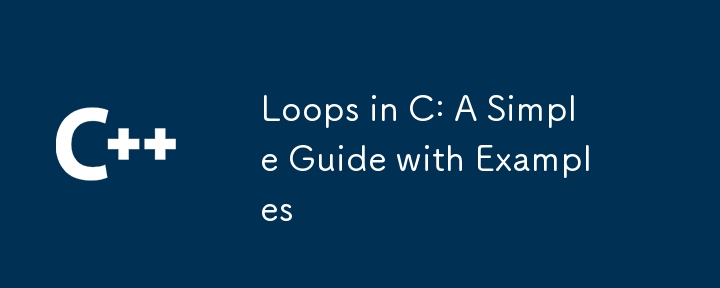
循環是程式設計中必不可少的工具,它允許我們重複執行一段程式碼。它們可以執行各種任務,從簡單的計算到複雜的資料處理。
在 C 程式設計中,我們有三種主要的循環類型:for、while 和 do-while。讓我們透過範例來探討它們。
當我們確切知道要重複一段程式碼多少次時,for 迴圈是預設選擇。這就像為我們的程式碼設定一個計時器來運行特定次數。
// syntax
for (initialization; condition; increment/decrement) {
// Code to be executed in each iteration
}
// example
#include <stdio.h>
int main() {
for (int i = 1; i <= 5; i++) {
printf("%d ", i);
}
printf("\n"); // Output: 1 2 3 4 5
return 0;
}
在此範例中,for 迴圈會列印從 1 到 5 的數字。初始化 ( int i = 1; ) 設定計數器變數 i 的起始值。條件 ( i ) 指定只要 i 小於或等於 5 ,循環就應該繼續。每次迭代後,增量 ( i ) 將 i 的值增加 1。
while循環就像條件循環。只要條件保持為真,它就會不斷旋轉(執行程式碼區塊)。
// syntax
while (condition) {
// Code to be executed repeatedly
}
// example
#include <stdio.h>
int main() {
int i = 1;
while (i <= 5) {
printf("%d ", i);
i++;
}
printf("\n"); // Output: 1 2 3 4 5
return 0;
}
這個 while 循環實現與上面的 for 循環相同的結果。它印出從 1 到 5 的數字,但計數器變數 i 在循環結構之外初始化並遞增。
do-while 循環堅持至少執行程式碼區塊一次,即使條件最初為 false。
// syntax
do {
// Code to be executed repeatedly
} while (condition);
// example
#include <stdio.h>
int main() {
int i = 6; // Notice i is initialized to 6
do {
printf("%d ", i);
i++;
} while (i <= 5);
printf("\n"); // Output: 6
return 0;
}
即使條件i 從一開始就是false,do-while 循環仍然執行程式碼區塊一次,列印i 的值(即6).
循環的用途非常廣泛,並且在程式設計中具有廣泛的應用:
最後,由於循環是程式設計的基礎,因此在 C 語言中理解循環將為您學習其他語言(如 Python、JavaScript 和 Java)做好準備。
以上是C 中的循環:帶有範例的簡單指南的詳細內容。更多資訊請關注PHP中文網其他相關文章!




